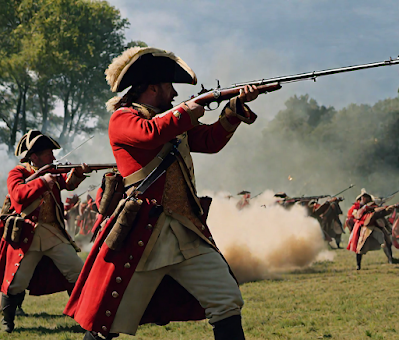Hello readers friends, how are you all. I hope everyone is happy and healthy. Today from Indian History we are going to talk about Begum Hazrat Mahal, a women freedom fighter,
- whose name was sufficient for british to get afraid of
- who was also known as Mahal Pari in the palace.
- whose tombs can still be found in Nepal today.
So let us begin the journey on Begum Hazrat Mahal.
 |
| Begum Hazrat Mahal |
Who was Begum Hazrat Mahal?
Begum Hazrat Mahal was born in 1820 in Oudh (also known as Awadh), Fezabad (in Uttar Pradesh). For some reason she was sold to a brothel dancer at an early age. Her childhood name was Mohammadi Khurram.
When Mohammadi Khurram grew up, the brothel dancer taught her to dance and sent her to dance in the palaces. Mohammadi Khurra was no less than a nymph in appearance. She was known in palaces as "Mahel Pari".
When Mahel Pari got the name "Hazarat Mahal"?
She used to go to the palaces to dance. One day she was dancing in the court of Wajid Shah (King of Awadh). When the king saw her, he felt love with her.
Seeing the nature, intelligence and beauty of Mahel Pari, Wajdali Shah married Mahal Pari. She became Mahel Pari Begum after marriage and was the second wife of Wajedli Shah. After the marriage Begum gave birth to a son named Birjis Kader. Begum was then named as "Hazarat Mahal" after the birth of Birjis Kader.
How did East India Company grab Awadh?
The British were doing injustice to the kings of Hindustan at that time. Also known as the "grab policy" by falsely incorporating the kingdom of Kings with the East India Company. Wajedli was trying also to usurp Shah's kingdom.
The rule of East India Company was that if a king did not have an heir, he should hand over his kingdom to East India Company. Wajedli Shah had a son so wanted to implicate him wrongly.
 |
| victim people |
He was falsely accused. Like Wajedali Shah does not know how to manage the state. People are not happy with it and took over Awadh by making false accusations.
Why didn't Begum Hazrat Mahal left Lucknow?
The British included Oudh (Awadh) in the East India Company. Wajdali Shah, the king of Oudh, left the kingdom and was sent to Calcutta in Bengal. In Calcutta, money was sent to him every month in the form of pension.
Wajedali Shah kept going to Calcutta but Begum Hazrat Mahal was not ready to leave Lucknow because she decided to stay in Lucknow and fight against the British for her rule of Oudh.
Why did both Hindus and Muslims supported Begum Hazrat Mahal?
Begum Hazrat Mahal was preparing an army with her son in Lucknow. She prepared her army by taking not only Muslims but also Hindus. The British used to destroy Hindu temples and blame the Muslims, they destroyed Majid and blamed the Hindus.
In this way the british made Hindus and Muslims fight against each other. The soldiers too did not like working in East India Company, because they were forced to open the cartridges with their mouths.
Both of them did not like that the religion of both Hindus and Muslims would be corrupted as the cartridges were made of cow and pig fat. She had support from both Hindus and Muslims.
How did Begum Hazrat Mahal became a trouble for British?
Begum Hazrat Mahal was ruling from Lucknow. She prepared her own army and was supported by Molvi Ahmad and Nana Saheb II. She defeated the British in many places with the help of her army. Begum Hazrat Mahal was now suffocating under the noses of the Britishers, which disturbed the britishers a lot.
The British wanted to capture her but she did not come under British control. Now the British knew that the she would not come into their hands so the British called other troops from abroad to capture her.
Why did Begum Hazrat Mahal went to Nepal with her son?
After Begum Hazrat Mahal separated the detachments of the army, they were sent for war. The division of army led to its subsequent defeat against the British.
The British conquered Delhi by invading it and now the entire British army was advancing to invade Lucknow. Begum Hazrat Mahal came to know that the British army was coming to capture her so she went to Nepal with her son.
Conclusion:
Thus, we have seen in this article how Begum Hazrat Mahal became a queen from a simple girl. Knowing the name Begum Hazrat Mahal, it seems as if there is a history of a palace, but this is the history of a queen. She wanted to come back to India but could not.
She died in Nepal on 7 April 1879 due to illness. Her mausoleum was built in Kathmandu which we can still see today. The Government of India also issued a postage stamp in her memory.
So readers, how did you like the story of Begum Hazrat Mahal? What are the things which should be added more in this article? If anything is remaining about her in this article feel free to comment in the comment box.
Thank you very much for reading this article till the end.
If you liked the article then do share it with your family and friends.
We will meet again very soon in another article with such another women freedom fighter from Indian History, till then take care.





















